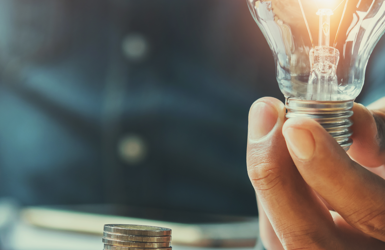Reducing water consumption in your home is beneficial for many reasons, it can lessen your energy consumption and lower your bills, something we’re all striving toward during these tough times. Saving water at home reduces your water bills, helps you to understand how much water your household is using, and helps you to take steps towards greener living.
Understanding where you’re wasting water and what your overall water usage is per month is the first step to implementing a water saving plan for the home. Once you have a clear understanding of your usage rate, you can take steps to reducing your water consumption.
Here are some top tips for saving water at home:
1. Review your current water usage
Invest time into fully auditing your current water usage and consequent waste. This will require effort from the whole household to take note of how much water they’re using each day.
Although this may be time-consuming and require a house-wide effort, it will provide a transparent view of what is and isn’t working well within your home; informing you on how to implement water saving solutions in your home and, ultimately, use less water and save more money.
2. Improve your plumbing
Although this will incur an upfront cost and is more of an investment than an easily implemented saving tip, improving your home’s plumbing is the most effective way to reduce your water consumption. Installing low-flow fixtures for your toilets, shower heads and tap faucets can immediately improve water efficiency and save on water usage and money.
Checking existing plumbing for leaks and any other easy fixes to improve efficiency is also an important step and should be investigated before spending money on new plumbing fixtures.
3. Review your heating
Although it may not seem as obvious as reviewing your home’s plumbing, reviewing, and replacing older-model hot water heaters and upgrading to a new, far more efficient water heating system at home can reduce the amount of water used.
Older and inefficient water heaters can not only waste water but can often be a drain on your home’s overall energy usage. Installing a modern hot water heater can quickly move your household closer to your energy and water saving goals without having to turn your heating off or limit yourselves.
4. Reuse waste water
This is a quick and simple way for you to save water at home but should be implemented with common sense and care. Reusing and recycling water reduces water waste and energy costs. It is not always appropriate or safe to reuse waste water but there are some simple ways to effectively reuse waste water at home.
Reusing water left over from baths, showers and from washing up dishes to clean floors, cupboards and windows saves drawing fresh water for cleaning in the home. Investing in a water butt or rainwater barrel allows you to collect rainwater for watering plants and the lawn.
5. Use only what you need
The easiest, everyday water saving solution in the home is for every member of the household to use only what they absolutely need in terms of water consumption.
Filling the kettle up just enough for one cup of coffee, turning the tap off when cleaning your teeth, putting the laundry on only once there is a full load of clothes to clean, ensuring you don’t overfill the bath or choosing to shower rather than take a bath, and using a bowl in the sink for washing up and cleaning produce are all simply yet effective water saving measures.
6. Install a Water Meter
This is a bigger investment as opposed to an easy everyday water saving tip but is a worthwhile investment to futureproof your home and ensure you’re as efficient with energy and water consumption as you can be. Installing a water meter allows you to have complete transparency of your water usage and cost each month and knowing your current usage rate is half the battle.
Having a water meter encourages you to reduce your water consumption, allows you to monitor usage, and is a hassle-free and cost-effective, long-term water saving solution.
7. Switch to water-efficient appliances and devices
In addition to installing low-flow showers, toilets, and tap faucets. Most new-model appliances and devices such as dishwashers and washing machines are water-efficient and worth investing in. Most new-model whitegoods in the UK now come with a water efficiency labelling system, which helps consumers identify the best appliances and devices to buy in order to achieve their water and energy saving goals.
8. Make it a household effort
The best way to clamp down on water consumption and waste is to roll out rules to the whole family! Getting every family member on board to consciously consider their water usage is the simplest way to save water at home. Involving the whole household and ensuring each member of the home takes personal care of their individual water consumption also allows for a wider discussion and group-input on other ways to effectively save water at home.
Saving water at home can be easier than you think. There are a range of small and larger measures you can implement, from everyday solutions such as recycling washing up water to larger investments such as installing new, efficient heating systems and low-flow plumbing. We’ve covered small and simple switches to saving energy at home as well as bigger home investments into energy efficiency.
-

Customers
Energy Saving Tips For Customers
With energy prices on the rise once again, it’s time for us to work harder than ever to manage the electricity and gas used within our homes.
Read more
